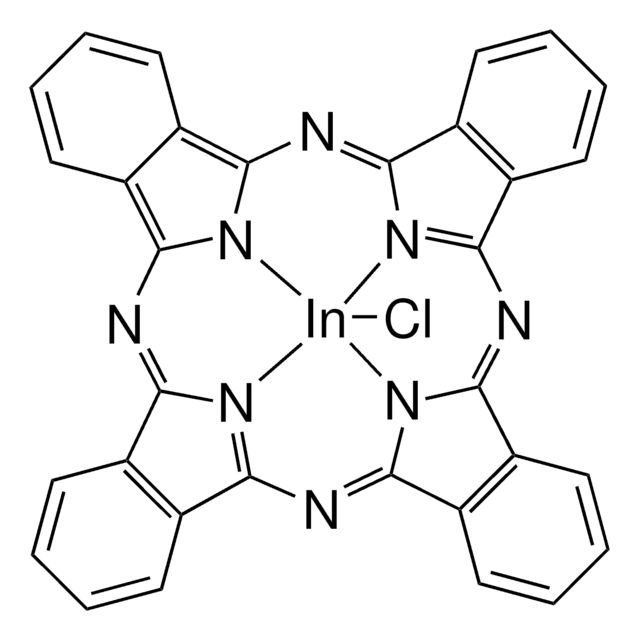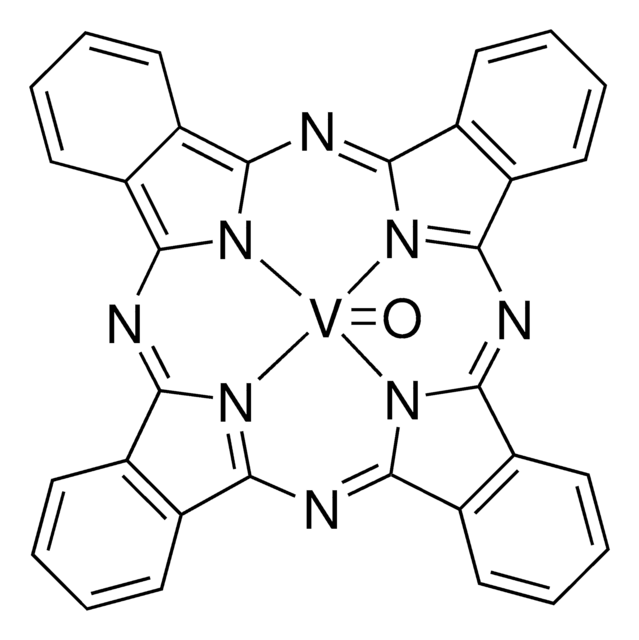446653
Copper(II) 1,2,3,4,8,9,10,11,15,16,17,18,22,23,24,25-hexadecafluoro-29H,31H-phthalocyanine
Dye content 80 %
Synonym(s):
F16CuPc
About This Item
Recommended Products
form
powder
Quality Level
composition
Dye content, 80%
mp
>300 °C (lit.)
λmax
689 nm
SMILES string
Fc1c(F)c(F)c2c3nc(nc4n5[Cu]n6c(n3)c7c(F)c(F)c(F)c(F)c7c6nc8nc(nc5c9c(F)c(F)c(F)c(F)c49)c%10c(F)c(F)c(F)c(F)c8%10)c2c1F
InChI
1S/C32F16N8.Cu/c33-9-1-2(10(34)18(42)17(9)41)26-49-25(1)53-27-3-4(12(36)20(44)19(43)11(3)35)29(50-27)55-31-7-8(16(40)24(48)23(47)15(7)39)32(52-31)56-30-6-5(28(51-30)54-26)13(37)21(45)22(46)14(6)38;/q-2;+2
InChI key
FJAOBQORBYMRNO-UHFFFAOYSA-N
Related Categories
General description
Application
Storage Class
11 - Combustible Solids
wgk_germany
WGK 3
flash_point_f
Not applicable
flash_point_c
Not applicable
ppe
Eyeshields, Gloves, type N95 (US)
Certificates of Analysis (COA)
Search for Certificates of Analysis (COA) by entering the products Lot/Batch Number. Lot and Batch Numbers can be found on a product’s label following the words ‘Lot’ or ‘Batch’.
Already Own This Product?
Find documentation for the products that you have recently purchased in the Document Library.
Customers Also Viewed
Articles
Flexible electronic circuits and displays based on organic active materials are future generations of products that may eventually enter mainstream electronics market.
Flexible electronic circuits, displays, and sensors based on organic active materials will enable future generations of electronics products that may eventually enter the mainstream electronics market.
Review the potential of self-assembled multilayer gate dielectric films fabricated from silane precursors for organic, inorganic, and transparent TFT and for TFT circuitry and OLED displays.
Fabrication procedure of organic field effect transistor device using a soluble pentacene precursor.
Our team of scientists has experience in all areas of research including Life Science, Material Science, Chemical Synthesis, Chromatography, Analytical and many others.
Contact Technical Service





![Dipyrazino[2,3-f:2′,3′-h]quinoxaline-2,3,6,7,10,11-hexacarbonitrile 95% (HPLC)](/deepweb/assets/sigmaaldrich/product/structures/151/558/c0e2c95f-5228-4864-a7a5-4b9765a19840/640/c0e2c95f-5228-4864-a7a5-4b9765a19840.png)


